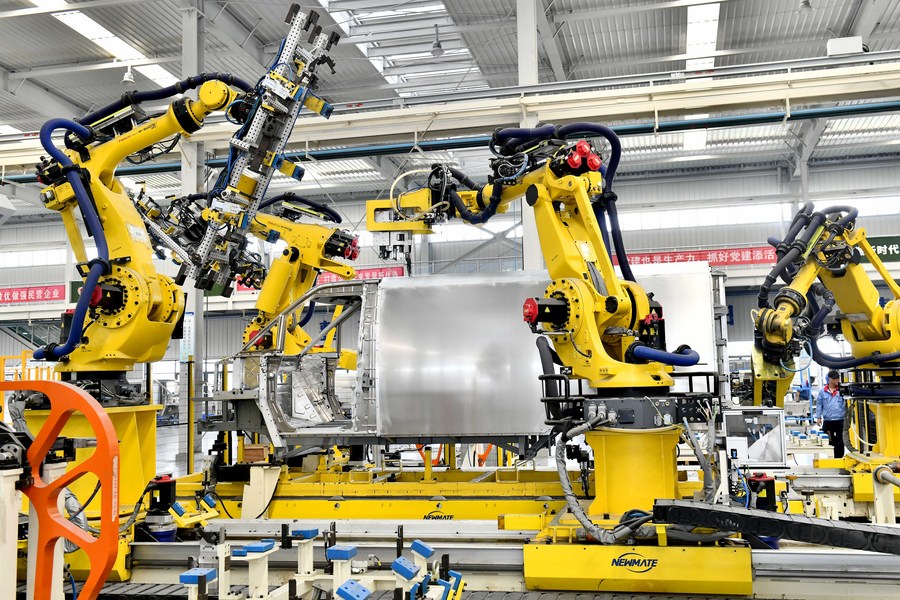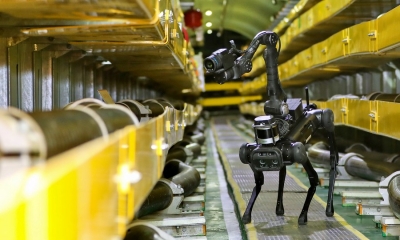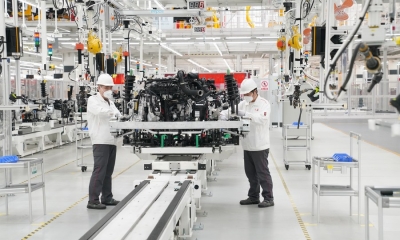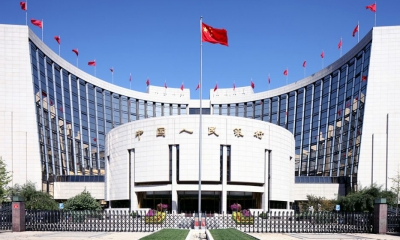Exceeding Expectations

China’s economic performance in 2023 laid solid foundation for growth in the new year.
The Chinese economy continued to rebound and made solid progress in 2023, despite the complex international situation and numerous risks and challenges. The accelerated economic structural transformation and upgrade, coupled with increasing economic resilience, has resulted in various highlights.
The Chinese government, through a series of proactive macroeconomic policies, including moderately expansionary fiscal policies and prudent monetary policies, created a conducive environment for stabilising and advancing economic development.
The quality and resilience of the economy continued to improve in 2023 thanks to efforts in structural transformation. For example, China’s exports of electromechanical products grew by 2.9 percent in the year, accounting for 58.6 percent of the total export value. Exports of products with high added value such as electric automobiles, lithium batteries and solar cells achieved double-digit growth, while exports of labour-intensive products declined by around 4 percent. This indicates a noticeable increase in technology contained in export goods.
Data from the National Bureau of Statistics published on 17 January shows that China’s GDP growth in 2023 stood at 5.2 percent, one of the highest among the world’s major economies, and that China is likely to have contributed more than 30 percent to global economic growth for the year.
Laudable performance
China took a significant step forward in reforming its economic system and elevating opening up to a higher level in 2023. During the year’s Two Sessions, the annual sessions of the country’s top legislature and top political advisory body, the Chinese government made a series of arrangements to further expand opening up, optimise the business environment, promote economic restructuring, and enhance international competitiveness.
The reform of China’s financial regulatory system made significant progress. As an outcome of the Two Sessions, the Central Financial Commission, Central Financial Work Committee, and National Financial Regulatory Administration were established. They constitute important institutional safeguards for managing financial risks and achieving full supervision over the financial sector.
Progress was also made in the reform of state-owned enterprises, with their total revenue growing by 3.9 percent and total profit increasing by 7.1 percent in the first 10 months of 2023. This has allowed them to play a more active role in areas essential to national economy and people’s livelihood.
The year 2023 marked the 10th anniversary of China’s proposal of the Belt and Road Initiative and the concept of building a community with a shared future for mankind, as well as the 45th anniversary of China’s reform and opening up. In the year, China not only held the third China International Consumer Goods Expo, the 133rd Canton Fair, the third Belt and Road Forum for International Cooperation, the 2023 China International Fair for Trade in Services, and the sixth China International Import Expo, further expanding the breadth and depth of its opening up, but also hosted the first China International Supply Chain Expo, attracting hundreds of domestic and foreign companies. It showcased China’s determination to maintain the stability of the global industrial and supply chains, forming a new platform for China’s opening up.
Important progress was made in policies for opening up, with China removing all restrictions on foreign investment access in the manufacturing sector and promoting opening up of the service industry. The Chinese market is becoming more open, with more space for global enterprises to develop, which will inject vitality into the world economy.

The standard of living for the people continued to rise. Backed by a series of policies prioritising employment at the central and local levels, employment remained basically stable in 2023, with the surveyed urban unemployment rate averaging 5.2 percent, 0.4 percentage point lower than 2022. The per-capita disposable income increased by 6.1 percent, a higher rate than the national economic growth.
The stable growth of income strongly supported consumer spending, with significant increases in consumption in areas such as travel, tourism and entertainment. This indicated improved quality of life for the people, which in turn drove economic growth. Data shows that consumption contributed 82.5 percent to the economic growth in 2023.
Enormous potential
It is undeniable that the Chinese economy faces many challenges. For example, downward pressure on economic growth still exists, and some industries face constraints in terms of environment and resources. Financial risks cannot be ignored, with some enterprises and local governments having amassed high debt levels. Moreover, demand and public expectations need to be shored up. These issues are likely to persist for a prolonged period, underlining the urgency for China to accelerate economic reform and technological innovation, providing impetus for faster and better economic development.
For 2024, the possibility of military conflicts intensifying in hotspot regions and trade protectionism in some Western countries will have broader impacts on international trade and the global industrial chain. However, from a global perspective, China’s economy remains competitive, with strengthened momentum for growth.
The improving resident income and consumption will continue to drive expansion of domestic demand, providing strong momentum for economic growth. A series of policies to support the steady development of the real estate industry will also bode well for the economy.
As mentioned in the Central Economic Work Conference in 2023, the favourable factors for China’s development outweigh the unfavourable ones, and the fundamental trend of economic recovery and long-term improvement remains unchanged.
To better achieve the economic goals for 2024, China needs to deepen supply-side structural reforms, promote high-level opening up, and ensure smooth domestic and international economic flows.
We need to create a more conducive environment for enterprises and build safer domestic industrial and supply chains.
More efforts should also be made to increase residents’ income and expand domestic demand, establishing a solid foundation for the sound development of the economy. Finally, China must prevent any systemic financial risk, which is a bottom line we must hold.
China’s economy has enormous potential and will maintain steady growth in the new year. With the joint efforts of the Chinese government and the entire society, the challenges and difficulties will be addressed, pushing China forward to realising the blueprint for Chinese-style modernisation.
 Facebook
Facebook
 Twitter
Twitter
 Linkedin
Linkedin
 Google +
Google +







